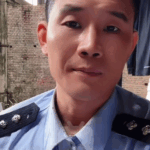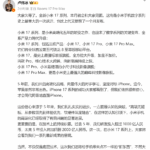BEIJING, Aug. 20 — China’s State Council Information Office held a press conference on Aug. 20 regarding the preparations for a military parade. It was stated at the conference that the parade will consist of two parts: the inspection of the troops and the march-past, lasting approximately 70 minutes.
On Sept. 3, China will hold a grand military parade to commemorate the 80th anniversary of the victory of the Chinese People’s War of Resistance Against Japanese Aggression and the World Anti-Fascist War. The parade marks the first such event since the comprehensive advancement of Chinese modernization on a new journey. It represents a new appearance of the people’s military as it strives toward its centenary, an important embodiment of the continued inheritance of the great spirit of the War of Resistance and the great national spirit in the new era, and a solemn declaration of upholding the correct view of World War II history, resolutely safeguarding the post-war international order, and firmly defending international fairness and justice.
The parade will proceed in two steps: the inspection of the troops and the march-past, lasting about 70 minutes. During the inspection, the troops will line up on Chang’an Avenue to receive the review. The march-past will include an air flag guard formation, foot formations, battle flag formations, equipment formations, and air formations, passing through Tiananmen Square in sequence.
The parade will consist of 45 formations. The air flag guard formation, composed of multiple helicopter formations, will escort flags, form characters, and display banners, symbolizing the nation’s growing prosperity and the military’s continuous development under leadership, as well as the enduring spirit of the War of Resistance over the past 80 years, declaring to the world the great truth that justice, peace, and the people will prevail.
The foot formations reflect both tradition and innovation. The traditional aspect includes veteran units from the War of Resistance, with participants drawn mainly from units that were predecessors of the Eighth Route Army, New Fourth Army, Northeast Anti-Japanese United Army, and South China Guerrillas, as well as militias from provinces where anti-Japanese bases were located. The innovative aspect represents the new layout of military force structure, including the “three-in-one” armed forces system. They will demonstrate strict military discipline, confident strides, and high morale, showcasing the new demeanor of political army building in the new era and the fine image of the people’s military.
The battle flag formations represent the honors earned in the flames of the War of Resistance. Each battle flag was forged with the blood and lives of martyrs, each telling a moving and epic history of the war. Typical flags from different periods, regions, and units were selected from countless heroes and honorary banners, to be carried by officers and soldiers from their respective units, symbolizing the continuous inheritance of the great spirit of the War of Resistance and the people’s military’s fearlessness and determination to advance.
The equipment formations are organized for joint combat operations, including land combat groups, maritime combat groups, air defense and anti-missile groups, information warfare groups, unmanned combat groups, logistics support groups, and strategic strike groups. Many represent the latest equipment in the evolution of modern warfare, including some key national assets, fully demonstrating the military’s powerful capability to prevail in modern warfare.
The air formations are modularized and systematized, consisting of advanced early warning and command aircraft, fighter jets, bombers, transport aircraft, and others, covering most of the main combat aircraft types in active service. Many are high-profile equipment, with some making their first public appearance, fully demonstrating the leapfrog development of the military’s air combat capabilities.
A joint military band composed of members from the PLA Guard of Honor Brigade and other units will perform well-known classic songs from the War of Resistance in front of the Monument to the People’s Heroes, evoking memories of the arduous years of the war and commemorating the heroes who sacrificed their lives for national independence and freedom. Some newly created pieces reflecting the characteristics of the times and the spirit of building a strong military will also be performed for the first time in Tiananmen Square.




